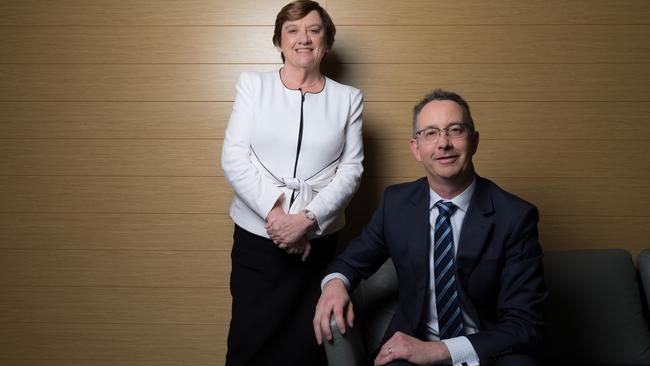Market responds positively to AGL’s $20bn power reset focusing on batteries
AGL’s plan to invest heavily in batteries and other grid-firming capacity has received an initial blessing from analysts.

AGL’s plan to invest heavily in batteries and other grid-firming capacity could be the key to future returns from its electricity assets, analysts say.
AGL shares gained on Friday after the company’s strategy reset received a warm reception from equities analysts, who played down the impact of the energy giant’s $20bn spending plans outlined on Thursday.
AGL delivered its long-awaited strategic reset on Thursday, announcing plans to exit coal by 2036 and replace its coal-fired power station portfolio with a suite of 12 gigawatts worth of renewable and firming assets.
But while conservative politicians reacted strongly to AGL’s plans to close its Loy Yang A plant in Victoria a decade ahead of schedule, the market pushed AGL shares up 24c, or 3.6 per cent, to a $6.84 close on Friday as investors digested the detail of the company’s future direction.

AGL’s plans to build 5.5GW of firming capacity – including batteries and pumped hydro – could be the major financial winner from the announcement, according to UBS analyst Tom Allen, who on Friday said UBS modelling suggested batteries would likely deliver post-tax rate of return of about 10 to 15 per cent on investment.
“AGL‘s focus on investing in batteries should unlock value. As more intermittent renewable generation enters the NEM, intraday price volatility has risen significantly,” Mr Allen said in a client note. “While this degrades the economics of AGL‘s existing baseload coal-fired fleet due to the generators’ lack of flexibility, it expands the potential arbitrage opportunities for batteries.”
AGL on Thursday said it would fund its battery and firming capacity plans from its own balance sheet – it already has a substantial portfolio in its development pipeline – but added that it was likely to seek external funding for much of the requirements for its planned construction of the 6.5GW of primary renewable generation needed to hit its 2035 target.
RBC Capital Markets analyst Gordon Ramsay said AGL’s existing footprint meant it was in a strong position to co-locate batteries and other firming capacity next to mothballed coal-fired generators, lowering construction costs and making the most of existing transmission infrastructure to sell short-term capacity into the market.

“We would view any other firming asset co-locations favourably, whether at sites AGL already owns, or with sites owned by third parties that are in strategically important locations in the network. This way these assets can benefit from providing system security services to the grid,” Mr Ramsay said.
And while the $20bn headline figure for the renewables build captured headlines and investor attention on Thursday, most analysts played down the likely impact on AGL’s balance sheet in the medium term.
Macquarie analysts said AGL’s investment in new primary generation assets was likely to come at a low capital intensity, as the company uses its 20 per cent stake in Tilt Renewables to move capital spending off its own balance sheet, and picks winners in the generation market through its position as a major electricity retailer.
“Firming from battery and pumped hydro is the primary capital demand. AGL already has a path to 1GW of firming by 2024, the bulk on balance sheet,” Macquarie analysts said on Friday.

“So to meet its 2030 target, AGL’s commitment is to another 0.7GW of firming – or $700m to $1bn of capex. We believe this can be comfortably funded from cashflow”
Mr Allen told UBS clients AGL has about $2bn of balance sheet capacity to contribute towards its renewable energy build, if the company wants to retain its current Baa2 credit rating.
“The key question we have about this is the $20bn required investment to achieve this, particularly around the proportion of funding that comes from each of AGL’s balance sheet, offtakes and partnerships,” he said.
But Credit Suisse analyst Peter Wilson said he believed the company would still continue to generate solid free cashflow in the medium term, despite its investment plans.
“Based on announced projects and benchmark costs, we estimate that AGL will require $400m per annum (growth capital spending) to 2030, net of debt financing and co-investment,” he said.
“This is an increase on the $200m growth capex in the 2023 financial year, but still leaves a large free cashflow surplus.”




To join the conversation, please log in. Don't have an account? Register
Join the conversation, you are commenting as Logout